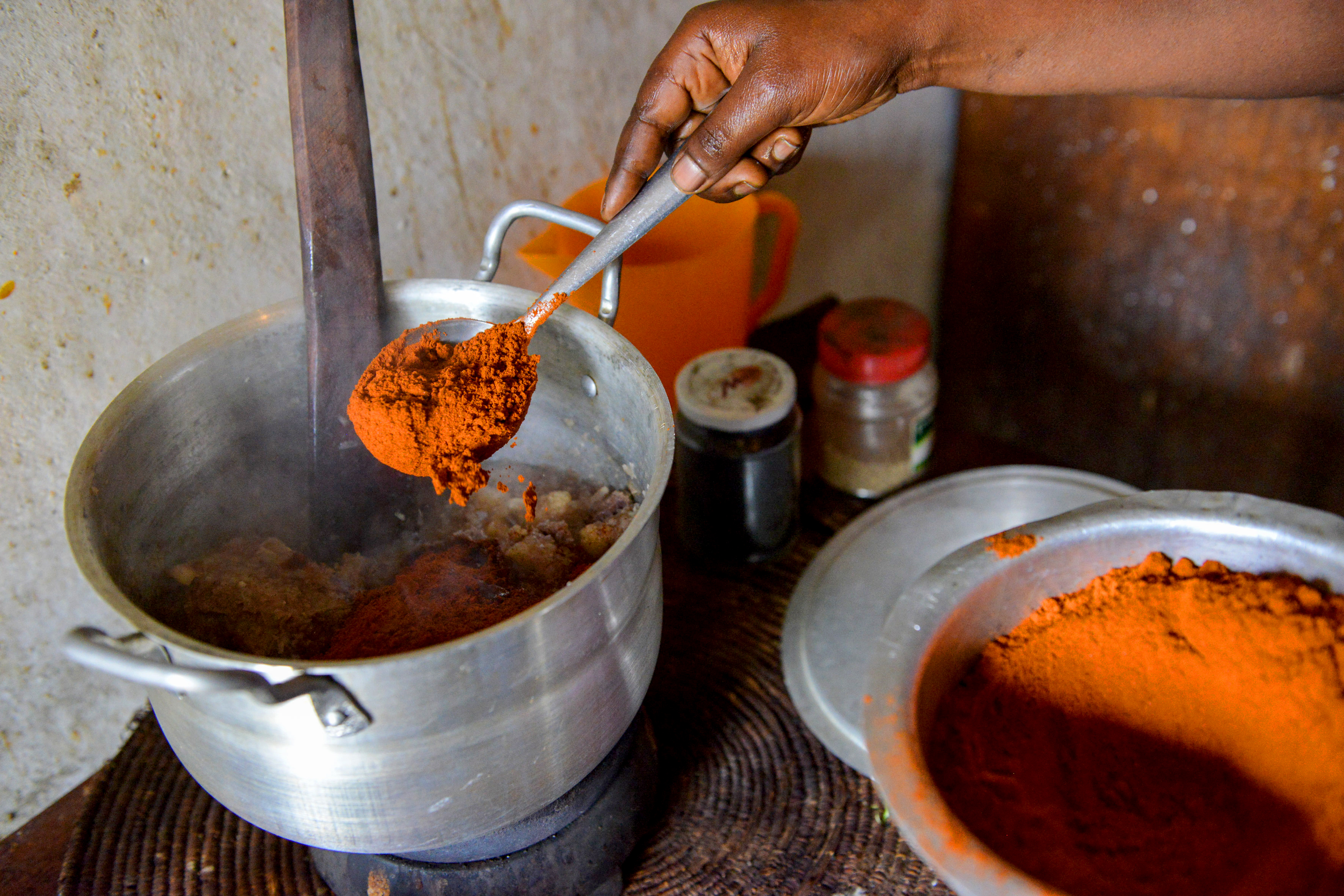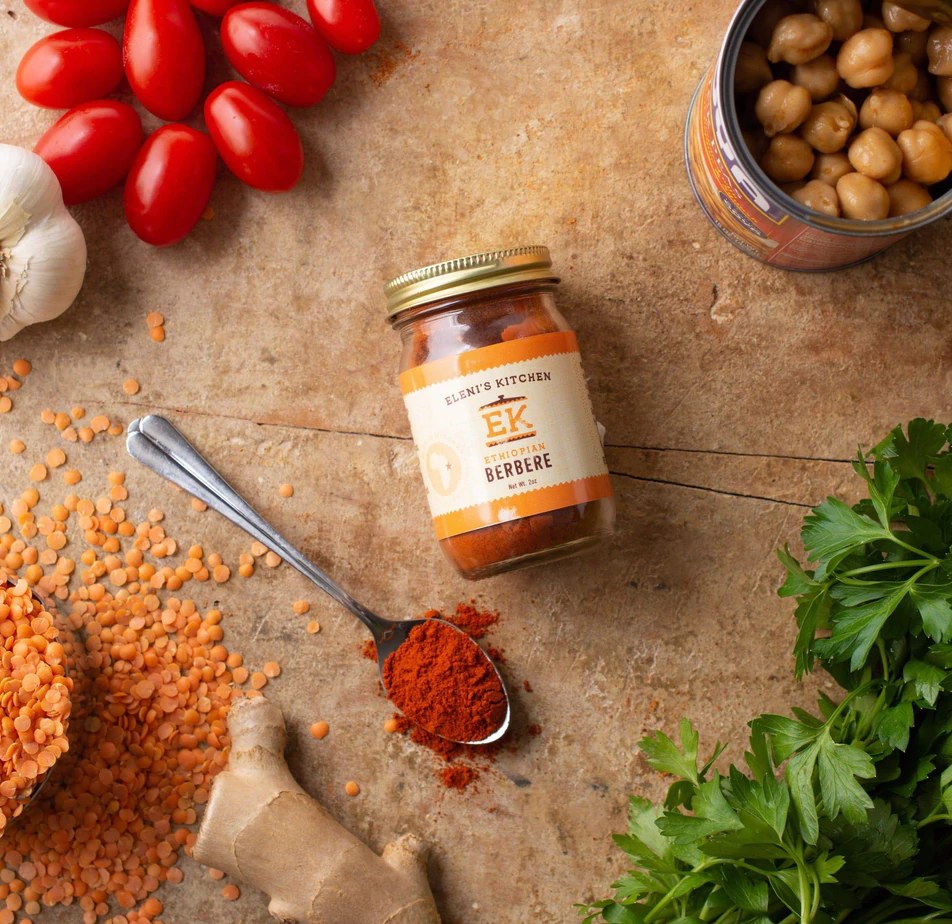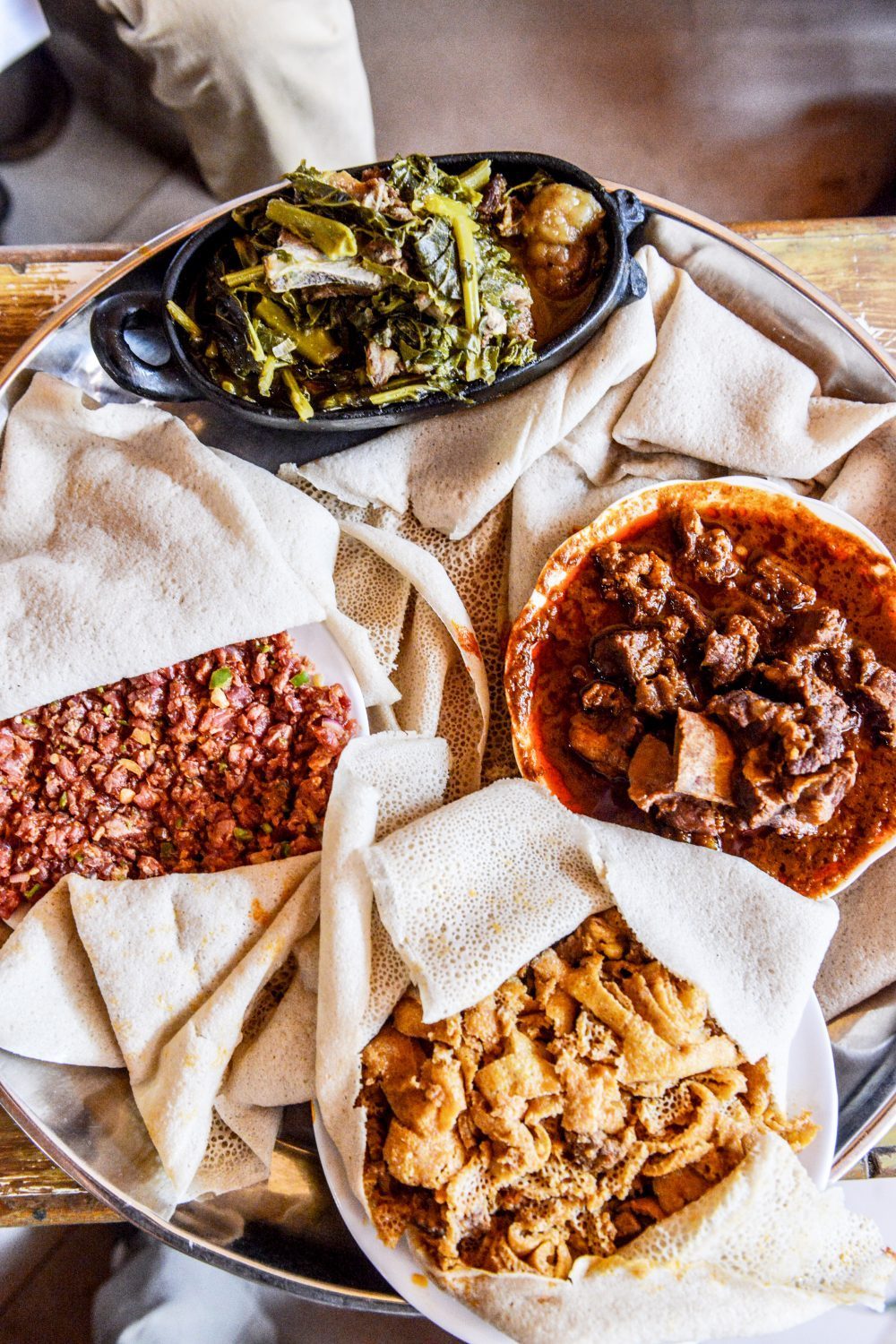In Ethiopia, the spices make the meal, which begins long before any cooking at community mills called wefcho bete. Neighbors lug mounds of whole spices and chilies by the trash bag to make their own signature blends, loading them into 8-foot machines with a massive hopper. The mixture passes through the mill three times to be ground into a powder so fine it sends red clouds into the air, coating the walls.
This visceral experience is the foundation of Ethiopia’s myriad savory stews—hearty mixtures of tender meat, simmering pots of sautéed vegetables and bubbling cauldrons of velvety lentils. There’s kitfo, a melt-in-your-mouth steak tartare; tibs, a stir-fry of tender beef; and doro wat, Ethiopia’s national dish, a slow-cooked chicken stew.
Spices are used by the cupful, not the teaspoon, acting as much as a sauce thickener as a flavor enhancer. All the better to sop up the sauce with spongy, sour injera flatbread, which is torn and eaten by hand.
Read on for a primer on the spices that give Ethiopian food its distinct flavor. And to learn more, check out Milk Street Cooking School’s class, Ethiopian Food at Home with Eleni Woldeyes, on April 13.
Meet Ethiopia’s signature spice blends
First up: berbere, a spice blend named after the glossy, chocolate-brown chilis native to Ethiopia. No Ethiopian kitchen is complete without its own version, which can differ widely from house to house. All blends feature the subtle smokiness and moderate heat of berbere peppers, and the remaining spices typically include cardamom, garlic, ginger, fenugreek, cinnamon, nutmeg, clove and others. The best berberes are made from spices that have been sun-dried or toasted—which coaxes out more flavor—and then milled. If you want to make your own berbere, try our recipe.

Another common spice blend is mitmita, a fiery finishing spice that gets its vibrant color and slow-building heat from bird’s eye chilies. Mitmita also stars ajwain, the earthy, herbal cousin of caraway; koseret, a verbena that tastes a bit like sage; and salt to amplify the mix’s complexity and nuance. Try this bold blend as a dry rub for a protein (we love it with beef or a mild fish, like cod, when steamed), tossed with roasted vegetables, or sprinkled on avocado toast or popcorn.
And Ethiopian spice soloists
A few single spices typify classic Ethiopian cuisine on their own, like korerima (Ethiopian black cardamom), timiz (Ethiopian long pepper) and besobila (holy basil). Ethiopian black cardamom gets its earthy, smoky aroma from being dried near an open flame. More savory and floral than green cardamom, this hard-to-find varietal adds depth to sweet dishes—try it in your spice mix for gingerbread—or to savory braises.
We use timiz, or Ethiopian long pepper, almost anywhere we would use standard black pepper—this aromatic seasoning is a less prickly option, bringing a mild smokiness and allspice-like fruitiness to sweet and savory dishes. The pepper berry grows wild in Ethiopian forests, and, like korerima, is dried by an open flame. Timiz is at home in rubs for roasted meats or steeped into a stock or a hearty stew. Holy basil has a lemony base, grassier and brighter than the sweeter Genovese basil you find in the supermarket.
Where can you stock up on Ethiopian Spices and Sauces?
Few supermarkets carry korerima, timiz or besobila, but you can order them at the Milk Street store. Forested Foods Timiz Ethiopian Long Pepper and Besobila Holy Basil are rich, earthy and funky, sourced directly from the farmers who forage them. We also carry Eleni’s Kitchen Ethiopian Koremima, the smoky, floral black cardamom we like blooming in clarified butter for amplified warmth and aroma. Eleni’s Kitchen is also our go-to source for robust berbere and mitmita blends: they’re the punchiest, warmest versions we’ve tested on the market and perfect introductory versions for budding cooks. For easier Ethiopian cooking, we go to Eleni’s Kitchen Hot Kulet and Mild Kulet Ethiopian simmer sauces. These rich Ethiopian sauces—which combine tomatoes, peppers, onions and berbere spices—are the cornerstone of many traditional Ethiopian stews.

How do you cook Ethiopian food?
To see some of these spices in action, sign up for our livestream class Ethiopian Food at Home with Eleni Woldeyes, coming up on April 13. Eleni, our most-trusted expert on all things Ethiopian cooking, will teach us how to transform lentils into hearty, stick-to-your-ribs stews, with alicha (a luscious, deeply yellow turmeric sauce), plenty of ginger and garlic and of, course, spices.
Piqued your interest? Try these related products.
For even more African flavor in your pantry, we love the simmer sauces from Kitchens of Africa, such as spicy West African Yassa and tangy-sweet Tamarind Sauce. We’re also fans of the vibrant sauces and spices from Essie Spice, like the Coco-for-Garlic coconut garlic sauce and nutty, earthy Mekko Dry Rub. To round out your meal, we also love Yolélé Fonio, our favorite version of the couscous-like West African grain. Try your hand at preparing injera, an East African spongy flatbread, at home with teff, the nutty East African ancient grain used for the dough—we enjoy both the Maskal Teff Brown Teff Grain and Brown Teff Flour.
For more on Ethiopian Cuisine:
- Watch Flavors of Ethiopia, where we learn about the spices and stews of Ethiopia with Beejhy Barhany
- Read Surrender to the Surroundings, where our Editorial Director J.M. Hirsch explores Ethiopia's community spice mills
- Read In Ethiopia, The Spices Make The Meal, where J.M. continues his discovery of Ethiopian cuisine at Addis Ababa’s sprawling Merkato, Africa’s largest open-air market.
Join the conversation on Facebook, Twitter, Instagram and Pinterest.
And if you're looking for more Milk Street, check out our livestream cooking classes with our favorite chefs, home cooks and friends for global recipes, cooking methods and more.
Get Ready to Cook
4
Servings
45 minutes
Get Ready to Cook
4-6
Servings
1 hour 10 minutes
30 minutes active
Get Ready to Cook
4
Servings
1 hour
20 minutes active
Get Ready to Cook
8-10
Servings
2¾ hours
20 minutes active





